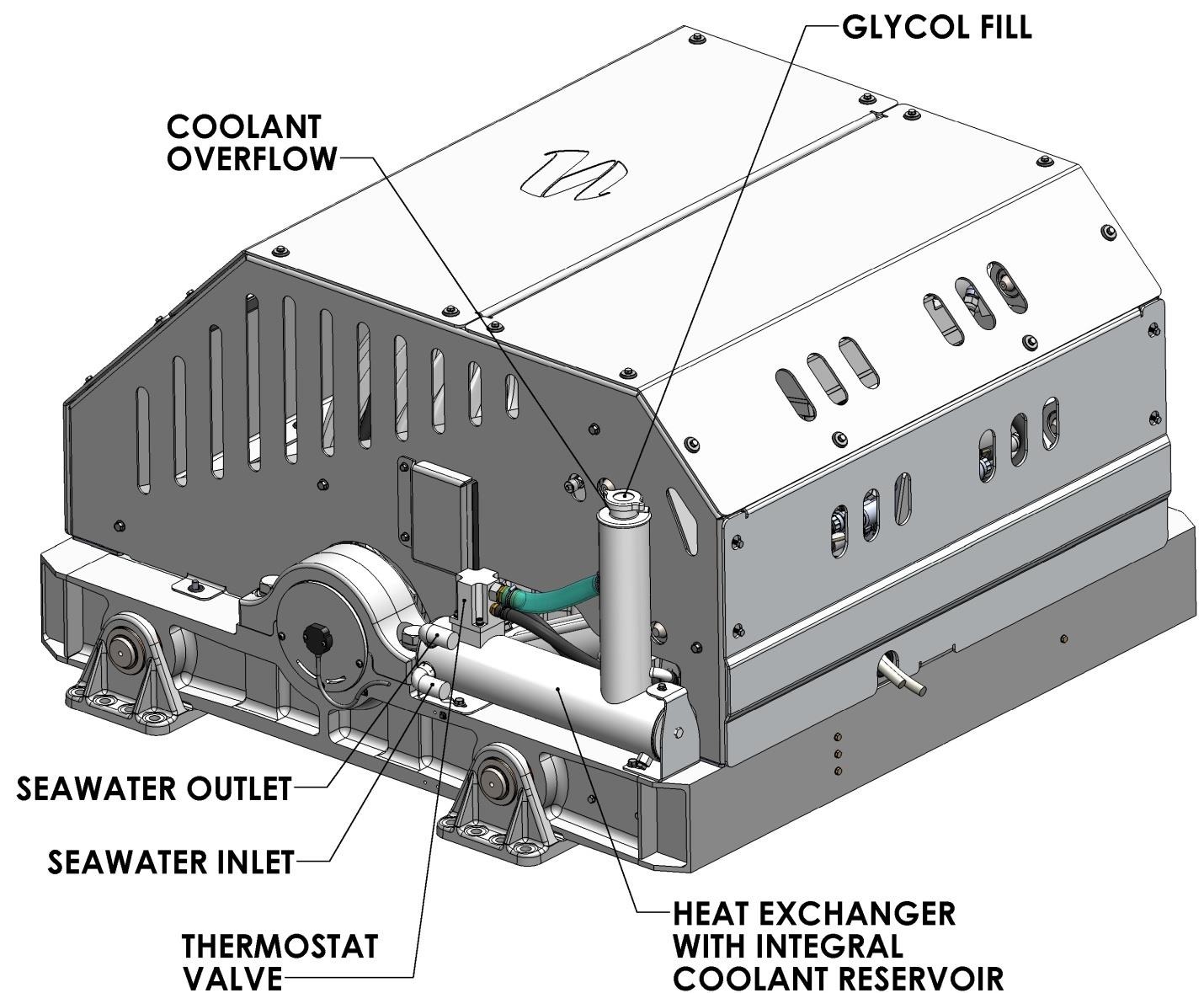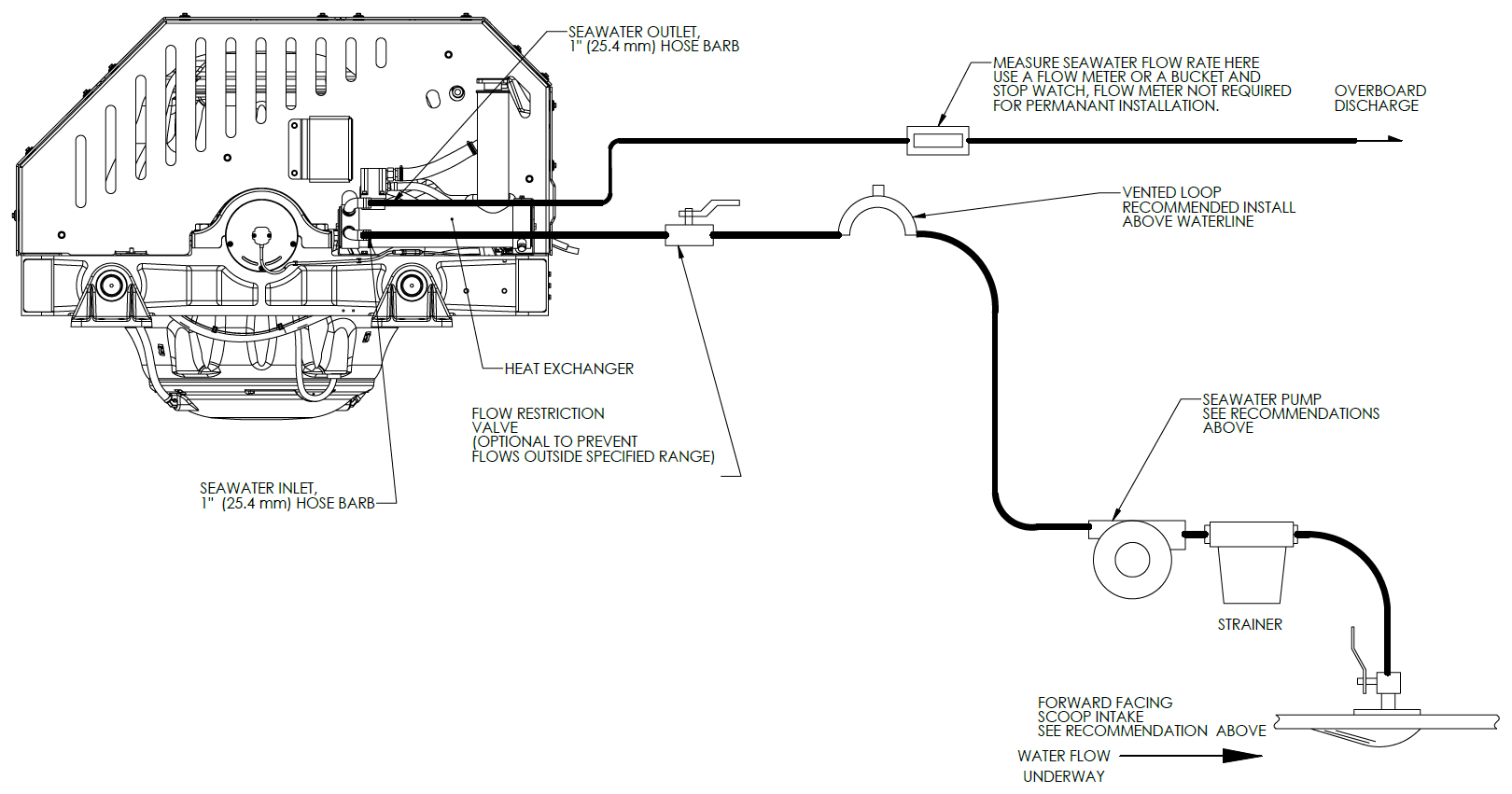Seakeeper 40 Installation Manual (90715-1)
4.2 Installation Considerations
- Installer is responsible for supplying a dedicated seawater pump and associated plumbing. Seawater connections on the heat exchanger mate with 1 in. (25.4 mm) hose. An optional seawater pump can be purchased through Seakeeper (P/N 30490).
- There is no need to disconnect hose from glycol pump except to replace the pump. In this case, provision will need to be made to catch draining glycol as plumbing is disconnected. Use caution to avoid breaking plastic hose connections on pump casing.
- An output is available from the Seakeeper 40 wire harness to power and automatically control seawater pump. This pump must operate on 24 VDC and consume less than 20 A. Pumps requiring other voltages or higher current can still be controlled by using this supply from the wire harness to trigger an installer-supplied contactor, but a separate source of power must be provided.
- The seawater pump is powered by Seawater Pump Output Cable, via “SW Pump 24 VDC Out” on the Seakeeper 40, as outlined in Electrical Installation section.
- A dedicated through-hull fitting should be installed for each Seakeeper unit onboard the vessel to ensure sufficient seawater flow to each unit.
- It is recommended the seawater pump be installed below the waterline, as close to baseline of the vessel as practically possible, to maintain positive inlet pressure on the pump in all operating conditions.
- A self-priming seawater pump may be required to maintain water flow in all underway conditions. Cavitation can occur at the seawater inlet and potentially cause an air-lock condition restricting seawater flow to the heat exchanger.
- Maximum seawater pressure in heat exchanger is 20 psi (1.4 bar).
- Seawater flow requirement through heat exchanger is 13 GPM (49 LPM) minimum and 15 GPM (57 LPM) maximum under all operating conditions of the boat. When sizing seawater pump, installer should factor in losses for raw water plumbing. In addition to initial operation at dock, new Seakeeper installations should be checked to be within the flow requirements while vessel is at speed. Flows higher than 15 GPM (57 LPM) could affect heat exchanger life.
- Vented loops (shown in Figure 3) are optional and should only be considered with centrifugal style pumps. Self-priming or positive displacement style pumps do not require a vented loop, including Seakeeper supplied optional pump (P/N 30490).

